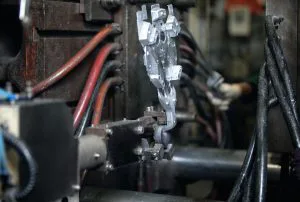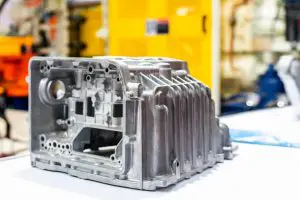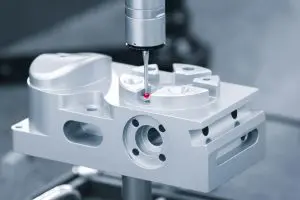Die casting is a widely used metal forming process, and in recent years, it has become the preferred choice over other methods such as forging and extrusion, as it can produce complex near net shapes at a faster rate, higher volume, and at a lower cost.
As a manufacturing process, die casting is where molten metal is injected into a mold at high pressure. However, this process if not controlled properly will result in the development of porosity. Porosity is a defect caused by air trapped within the casting during the injection phase. If left untreated, it can cause serious problems such as compromised structural integrity and poor surface finishing of a part.
You can set processing parameters and part design criteria to reduce material porosity. In this article, our die casting manufacturers will share about the causes of die casting porosity and how to mitigate it.
Table of Contents
What Causes Porosity in Die Casting?
To understand what causes porosity in die casting, you must first understand what occurs during the die casting process. As mentioned earlier, die casting is a manufacturing process in which molten metal is injected into a mold and then cooled to form a part.
Porosity occurs when air enters the cavity during injection molding. This happens because the molten material has less resistance to flow through narrow passages. As a result, air gets trapped and consequently bubbles are formed inside castings. This leads to defects such as contraction cavities, gas pores, and voids. These are the two main sources of porosity in die casting:
- Gas Pores – These occur when gas or air from various sources is trapped within the molten metal. This causes impurities and leads to higher material porosity.
- Contraction Cavities – These form when the molten metal in the mold starts to cool and take shape. As it contracts and solidifies, this will cause the part to develop pores that will compromise its structure.
The cause of these defects varies as it is dependent on the type of metal being cast. For example, Aluminium is less porous as compared to steel as it has a higher melting point.
Controlling your Die Casting Production Parameters
To achieve quality castings, the precision die casting process requires precise control over several variables such as temperature, time, and mold design as they can affect the flow rate of the molten metal through the mold. Consequently, this will have an impact on the properties of the part produced. If these parameters are controlled properly, the resulting castings will have uniform microstructure and mechanical properties.
Here are some production parameters you will need to control to reduce porosity:
Temperature – The most common way to control porosity is by adjusting the temperature of the molten metal during pouring. If the metal cools too quickly, it will contract and form pores. To prevent this, the temperature of the molten metal is raised above its melting point so that it does not contract so quickly.
Pouring Speed – Pouring and machine speed will affect the porosity of your parts. To minimise this, ensure that the pouring speed and injection pressure are consistent. For reduced porosity, ensure that your machines pour and inject the molten metal at the most optimal speed and pressure.
Solidification Time – Solidification Time is the amount of time the metal spends inside the mold. If the metal stays too long in the mold, cools down, and solidifies before being removed, it will cause defects such as contraction cavities and surface roughness.
Mold Design – Poor mold design will also affect the overall porosity of your parts. Therefore, it is necessary to establish stringent production parameters to ensure that your project’s molds are designed according to specifications and industry standards.
Choose EKO for Your Die Casting Needs
When you want to control porosity in your parts, you would want to seek the advice of experts. Here at EKO Industries, we have the industry expertise and subject knowledge to reduce porosity with the proper production parameters. With over 20 years of experience, we can manufacture die cast parts that are high in quality for your organisation’s project needs. Speak with us today to find out more about our aluminium die casting services to see what we can offer your organisation.



